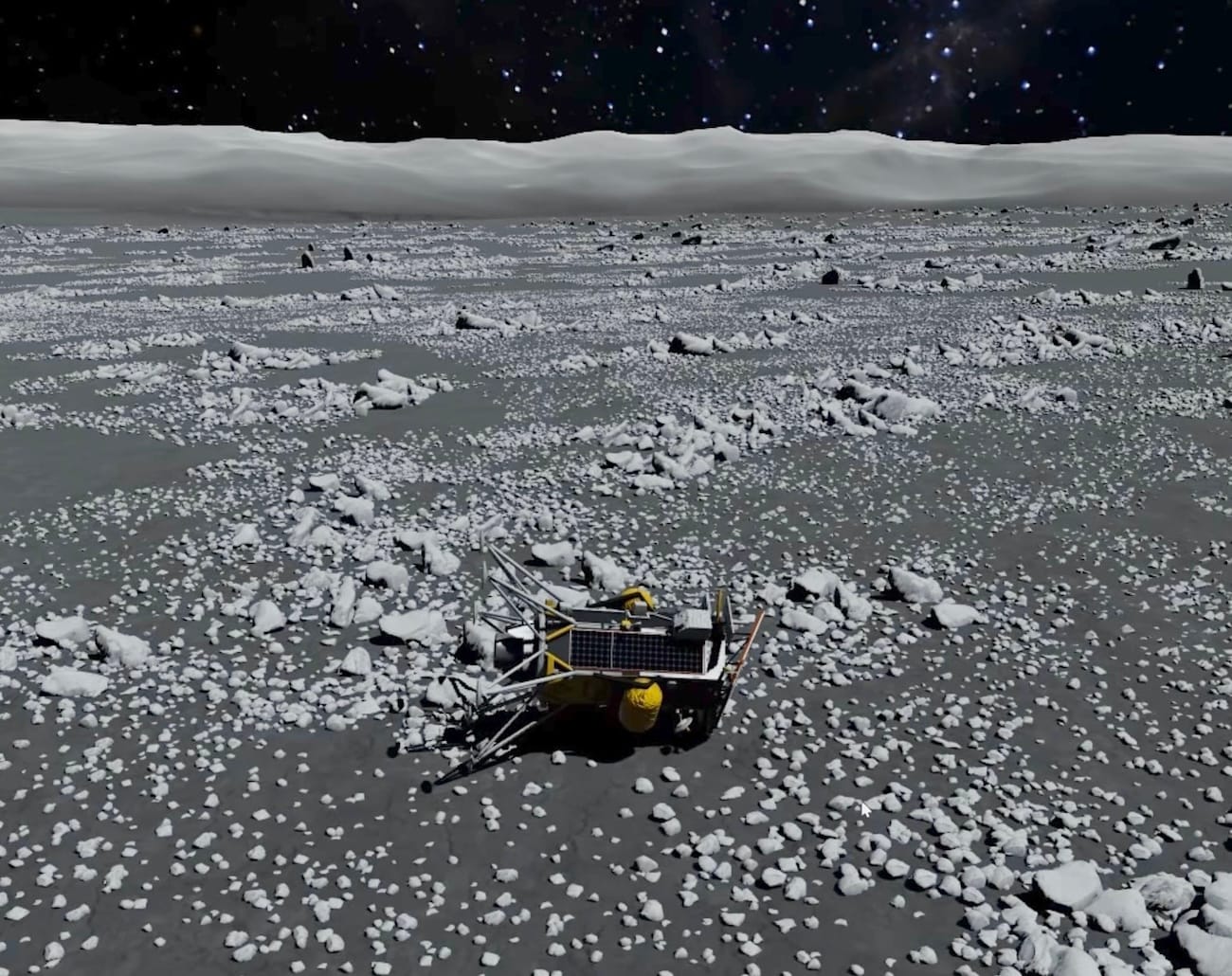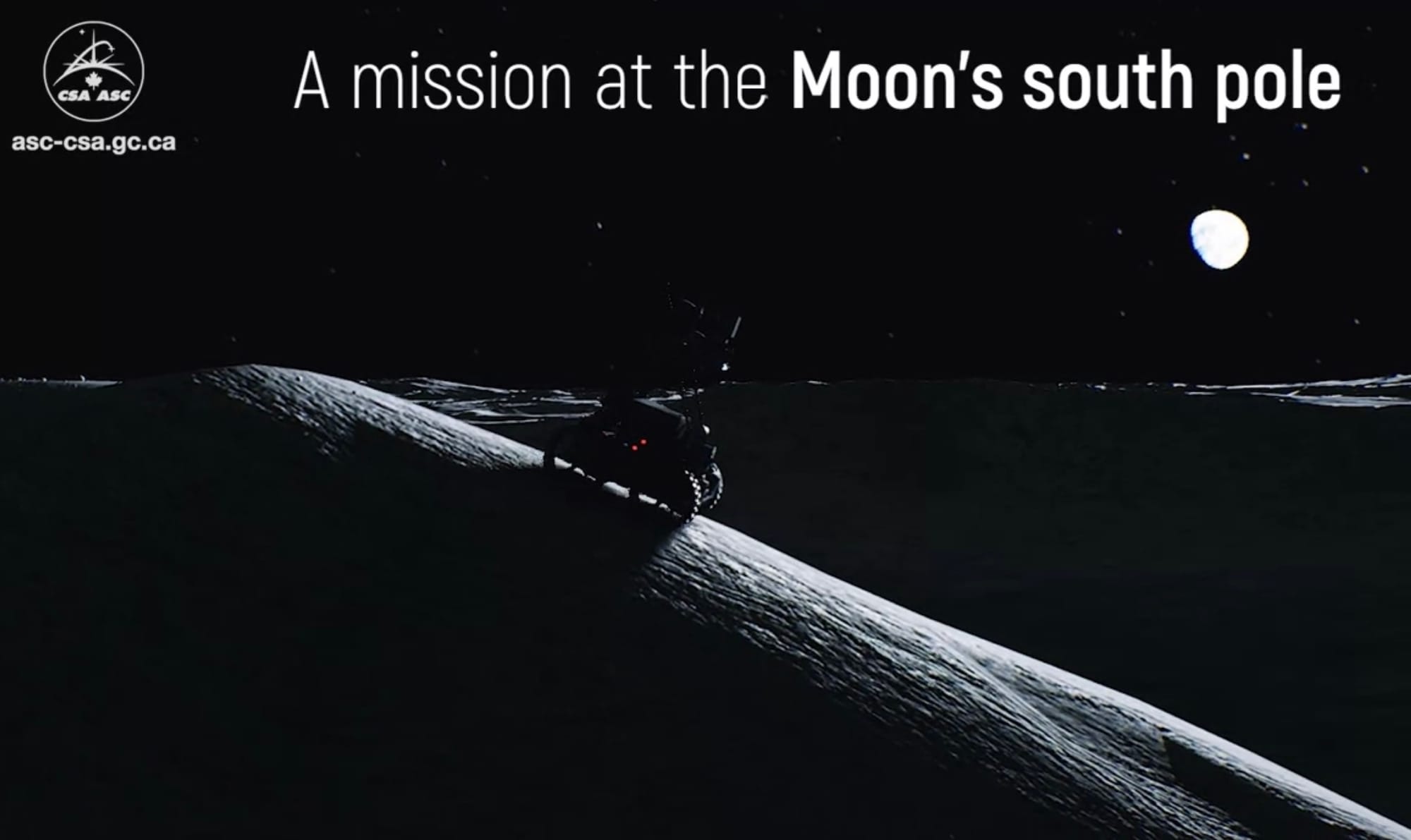Moon Monday #165: An oblique Odysseus, Moonstruck maple nation, and more updates
I’m thrilled to welcome Off Planet Research as the newest sponsor of Moon Monday! The Everett-based company specializes in creating lunar soil simulants that help test landers, rovers, and science experiments with high fidelity. Personally, I’m intrigued by their icy regolith simulant OPRFLCROSS2 as it falls under a category that will be increasingly relevant as the world continues to mount missions to the Moon’s south pole. 🌗
Aside: This edition of Moon Monday was half-written on my phone with a makeshift keyboard (see picture at the end) while my trusty laptop gets a part fix so kindly bear the rawness.
On the opaque victory of Odysseus

On February 22 at 23:23 UTC, Intuitive Machines’ Odysseus lander became the first non-governmental spacecraft to touchdown on the Moon. Confirmation came 15 minutes later via a weak signal from the lander. At this point, the publicly traded company prematurely stated that Odysseus is “upright” whereas the company told in a media briefing the next day that the 4.3-meter tall lander has tipped on its side because it came down with a high, unplanned horizontal velocity of one meter per second. The vertical velocity was three times higher than expected too at three meters/second.
The situation has made mission operators unable to point the non-steerable high gain antenna to Earth for sending over lunar descent and surface images. Power is limited too because of fewer panels being lit than in a nominal mission scenario. As such, lander operations—including the NASA instruments onboard sent via the agency’s CLPS program—are stuck at low data rates as Alan Boyle reports.
Even this partial success would’ve been lost if mission operators hand’t tried using the lander’s laser rangefinders to precisely measure its distance to the Moon prompted by Odysseus being closer than needed after orbital injection (which made its methalox fuel boil-off an increasing concern). That’s when the company realized the lasers didn’t work because they forgot to turn off their safety switch before launch. Without altitude and velocity measurements, Odysseus wouldn’t be able to guide itself to land on Luna. Definitely file this one under past mistakes to avoid in our grand return to the Moon this decade.
As it so happens, the NASA LiDAR onboard called NDL—intended to test precision navigation for future Moon landers—could provide the needed measurements. And so the company and NASA scrambled to send a software patch to hook NDL to Odysseus’ guidance and navigation system. It worked! Personally, I’m not convinced about this never being tested internally before launch but it’s nevertheless an impressive show of responsiveness. With its landing site being 80.13°S, 1.44°E, the company says Odysseus touched down within 1.5 kilometers of its target site, whose coordinates were never shared. As such, Odysseus missed its precision landing goal of being within 100 meters of the target spot.

All challenges considered, this IM-1 mission was a success for Intuitive Machines. The array of lessons and milestones from the company’s first Moon mission will feed positively into its next two lunar rides: one to the south pole and the other to the magnetic swirl of Reiner Gamma. Both these missions have NASA as the anchor customer too. As such, Odysseus’ outcome bodes well for NASA to continue its bet on CLPS for now.
However, as I argued in the crux of Odysseus, while there’s reason to celebrate the story of IM-1, it’s also important to remember that the success rate of autonomous lunar landings in the past five years stands squarely at 50%. And that’s after discounting the oblique state of Odysseus severely limiting its surface mission. It also shouldn’t be forgotten that the previous two non-governmental lunar landing attempts from ispace and Astrobotic showed greater transparency in their communications—despite failure—than the publicly traded Intuitive Machines.
Many thanks to Epsilon3, Off Planet Research and Karan Maindan for sponsoring this week’s Moon Monday. If you love my work, join them.
Maple nation still Moonstruck

CSA continues to invest in advancing planetary roving technologies as part of an ongoing five-year CAD $150 million investment under a program called the Lunar Exploration Accelerator Program (LEAP). Previously, CSA chose Canadensys to develop the country’s first lunar rover to explore south polar water ice. It will launch on an as-yet unspecified NASA-funded CLPS lander in 2026. (It’s also through LEAP that several payloads flew last year on ispace Japan’s first Moon lander, which though unfortunately crashed.) Now CSA is funding more developments: Canadensys gets CAD $2.5 million to demonstrate an AI-enabled 360° imaging system on a rover; Mission Control gets CAD $3.5 million to demonstrate classifying terrain features with an onboard AI system, and NGC Aerospace gets CAD $0.7 million to test GPS-like navigation for rovers.
Recall that last year Canada said it will invest $1.2 billion over 13 years to develop a “Lunar Utility Vehicle”, which aims to provide critical assistance to Artemis astronauts on future surface missions. Canada hopes that just like how contributing their Canadarm3 robotics servicing system to the upcoming NASA-led Gateway lunar orbital habitat bagged seats for their astronauts on future circumlunar Artemis missions, such a rover will enable a Canadian to walk on the Moon. Likewise, JAXA hopes to get a Japanese on Luna in return for providing an advanced crewed pressurized rover to NASA.
More Moon

- Defying JAXA’s own expectation, the solar-powered SLIM lander managed to reestablish contact with Earth on February 25, roughly an Earth week after local sunrise at its landing site within the rocky ejecta of the Shioli crater. But with the near-equatorial-noon being too hot, JAXA terminated communications for the time being and will reestablish the same a few days later to hopefully operate the lander again. It should be noted that unlike SLIM’s case, the chances of Chandrayaan 3 and Odysseus surviving the lunar night have been and are more slim because the near-polar lunar nights are more frigid than near-equatorial ones.
- NASA continues to leverage suborbital flights of Blue Origin’s New Shepard vehicle for testing upcoming lunar technologies. In 2021, the agency funded Blue Origin to upgrade New Shepard’s capsule to simulate lunar gravity. Now, a December 2023 New Shepard flight carried an experiment to measure how Moon-like dust particles gain and accumulate charges in microgravity, something crucial to understand in order to have upcoming techniques more effectively protect astronauts, lunar hardware, and future habitats from the damaging effects of clingy Moondust. On earlier New Shepard flights, NASA tested autonomous lunar navigation and precision landing technologies. Related: Per the original solicitation, NASA asked Axiom Space to design their AxEMU suits such that Artemis III astronauts wearing them release less than 100 grams of lunar dust into the cabin post-moonwalks for safety.
- Lucas Laursen reports that NASA is extending its Earth observation data aggregator tool called the Remote Sensing Toolkit to lunar data. Among other things, it will help bring payload data from NASA’s CLPS program in one repository, which offers a calibrated usable archive as a baseline.
- Sponsored listing: Open Lunar Foundation is hosting a free online event on March 5 at 17:00 UTC to discuss the latest in their proposal for developing a Lunar Registry of objects and activities. Not sponsored: I recommend checking out the project’s white paper to understand how such a registry could improve transparency and understanding of Moon missions globally.

